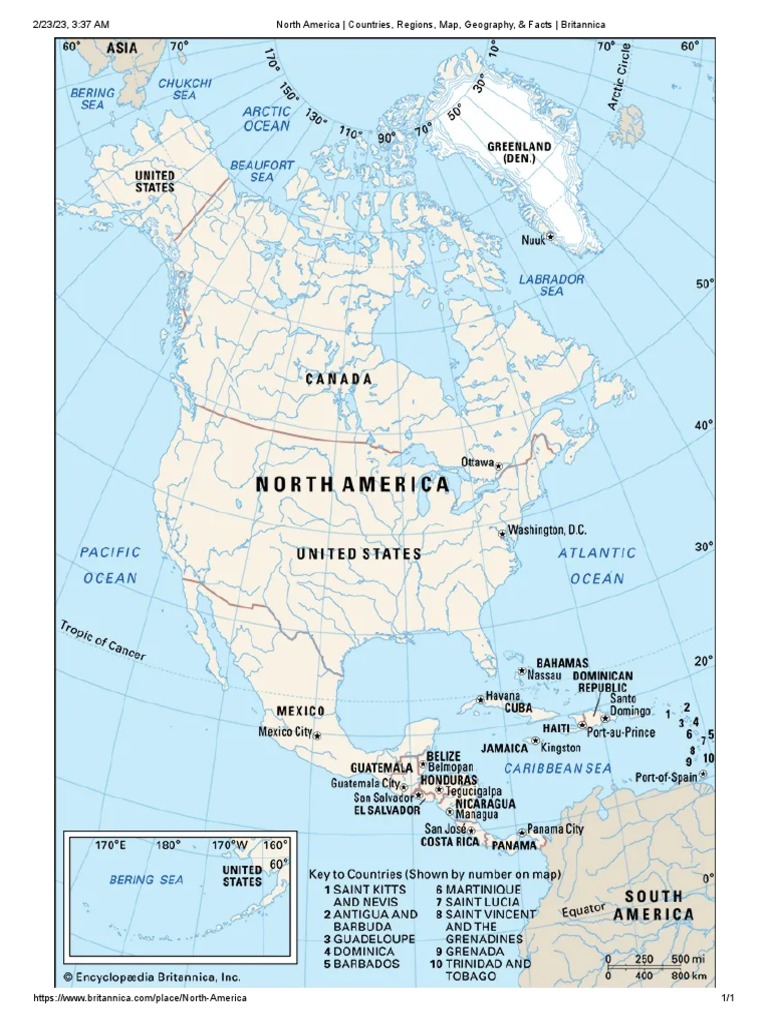North America is a vibrant tapestry of cultures, landscapes, and histories. It comprises a diverse array of countries, each with its unique identity and contributions to the global community. But let’s ponder a playful question: if you could only visit three countries in North America for the rest of your life, which would you choose? This choice might not be as simple as it seems, given the myriad of options available. The continent includes 23 countries and a few dependent territories, and each possesses splendor worth exploring.
To understand this continent fully, one must begin with the most well-known junction: the United States of America (USA). Spanning from the eastern seaboard to the western cliffs of the Pacific, the USA is replete with innovation, entertainment, and natural wonders. From the bustling streets of New York City to the serene landscapes of Yellowstone National Park, the USA presents a plethora of experiences. Additionally, one might consider the ecological challenges faced by this country—tackling climate change, promoting sustainability, and protecting biodiversity. The juxtaposition of urbanization with natural preservation poses an ongoing dilemma: how can such a massive nation balance growth with ecological responsibility?
Immediately north of the USA lies Canada, the second-largest country in the world by area. Notable for its breathtaking national parks and multicultural populace, Canada is often viewed as a land of opportunities and a model for progressive policies. However, what happens when cultures converge? The amalgamation of different ethnic backgrounds presents both enrichment and challenges. Wiley, with its stunning landscapes, Canada also faces environmental predicaments, from deforestation to climate-induced alterations in its ecosystems. The battle against climate change is just as fervent here, urging countries to collaborate across their borders. How can Canada lead in environmental aspirations while celebrating its diverse heritage?
Further south, we encounter Mexico, a nation rich in history, gastronomy, and vibrant traditions. From the ancient ruins of Teotihuacan to the bustling markets of Oaxaca, Mexico offers tales that resonate through time. Yet, it faces significant hurdles, including economic disparities and environmental degradation. The issue of pollution in urban areas is rampant, particularly in Mexico City, where the inhalation of smog is a daily concern. The resilience of the Mexican people appears boundless; can they rise to these challenges and serve as a beacon of environmental stewardship?
Moving to the Caribbean, the nations and territories that comprise this region, such as Cuba, Jamaica, and the Dominican Republic, pack their own environmental and sociocultural complexities. The Caribbean islands are often celebrated for their stunning beaches and biodiverse ecosystems. However, they are disproportionately vulnerable to climate change, experiencing frequent hurricanes and rising sea levels. The Caribbean countries face a daunting task: how do they cultivate sustainable tourism while protecting their fragile environments?
The Central American countries—comprising Guatemala, Honduras, El Salvador, Nicaragua, Costa Rica, and Panama—also have astounding contributions to the mosaic of North America. These nations exhibit a rich indigenous heritage and breathtaking biodiversity, particularly in Costa Rica, which is renowned for its commitment to environmental conservation. But, as agricultural practices expand and urban areas swell, how can these countries implement effective conservation strategies? Central America’s delicate ecosystems demand urgent attention and innovative solutions.
Then we have the multitude of countries and territories in the North, notably in the Arctic region, such as Greenland, which is an autonomous territory of Denmark, alongside the territories of Canada. This vast, icy expanse poses questions regarding indigenous rights, climate change effects, and sovereignty. With ice sheets melting at an alarming rate, can these nations prioritize environmental advocacy while navigating complex political landscapes?
As we look towards the future, the intricate interplay between human activity and natural survival becomes apparent. Each country in North America faces unique challenges influenced by their geographical and sociopolitical contexts. Many nations are united by shared concerns—climate change affects all, indifferent to borders. Yet, the responses vary drastically. Collaborative efforts such as the North American Agreement on Environmental Cooperation highlight promising pathways to address cross-border environmental issues. Still, one must ponder: is collaboration enough to combat such a pervasive threat?
Economic pursuits frequently overshadow the need for ecological integrity. Urban areas continue to grow, expanding human footprints into natural habitats, threatening biodiversity. The choices made today will echo into the future, directly impacting the planet’s climate stability. Therein lies the challenge for all countries in North America: how can they uniquely preserve their heritages and promote sustainability without compromising their ecological responsibilities?
Ultimately, the conversation surrounding North America stretches beyond its borders. Each nation must confront its shortcomings while striving for collective progress. The synergy achieved when countries collaboratively champion environmental protection deepens their narratives and fosters a more sustainable future. The interplay of natural beauty, cultural heritage, and environmental urgency produces a riveting dialogue, inspiring each generation to embark on the daunting journey toward ecological stewardship. As the landscapes of North America evolve, one must ask: will the countries unite and innovate for the benefit of all beings, ensuring prosperity for generations to come?
